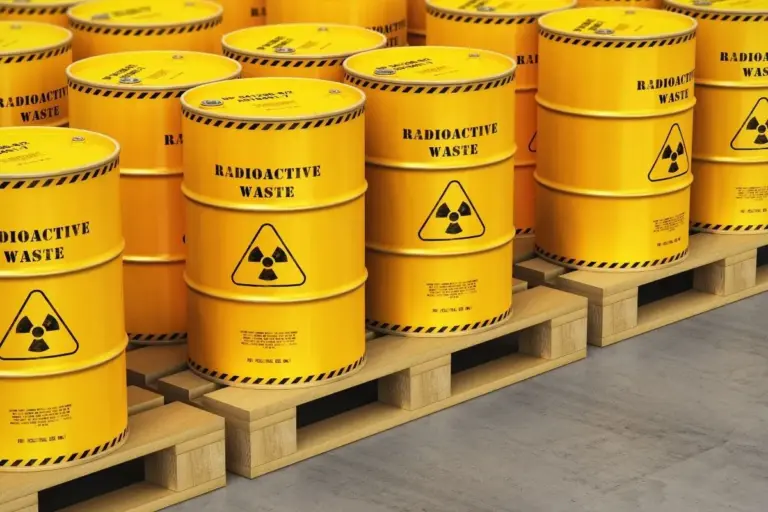Advertisements
To the buckets are part of the urban landscape of almost every city. Used to dispose of rubble and other materials, they take up space on the streets and often cause inconvenience, both due to their size and aesthetics. But could these “metal monsters” have a more creative and useful purpose?
This was the vision of English artist Oliver Bishop-Young, who decided to transform them into something much more than just trash containers. In this article, we will explore how he achieved this and how these ideas can inspire a new look at urban space. We will also discuss the environmental impact of buckets and how to reuse them in innovative ways.

Creativity and Sustainability in Urban Space
Dumpsters are a common sight in urban areas, often associated with the disposal of construction and renovation debris. However, despite their practical utility, they often take up space and contribute to visual pollution in cities. English artist Oliver Bishop-Young brought a new perspective by proposing creative ways to reuse these metal structures, transforming them into something more than just trash containers. In this article, we will explore how it is possible to transform dumpsters into functional and aesthetically pleasing elements, promoting a reflection on the use of urban space.
The Problem with Dumpsters: Space and Aesthetics
Dumpsters are essential for facilitating waste disposal in urban areas, especially during construction and renovation projects. However, they also pose a challenge, as they take up valuable public space and often remain abandoned for long periods. When poorly managed, these structures become centers of disorder, with debris overflowing, causing visual pollution and even hindering traffic on streets and sidewalks.
Furthermore, the constant presence of dumpsters on the streets can limit the use of public space for other activities, such as leisure or social areas. In increasingly densely populated cities, where space is a scarce resource, the question arises as to whether there might not be more efficient ways to use these structures.
Dumpsters and Public Spaces: An Urban Challenge
Dumpsters, despite their usefulness, are often seen as an inefficient use of urban space. Because they are large and robust, they can restrict pedestrian flow and, in some cases, even hinder vehicle circulation. However, instead of seeing them as just a problem, artists and designers have explored ways to reinvent their use, creating solutions that integrate these structures more harmoniously into the urban environment.
Oliver Bishop-Young, for example, saw the potential of these dumpsters beyond waste disposal, proposing new ways of using them that benefit the population in a fun and functional way.
The Creativity of Oliver Bishop-Young: Transforming Dumpsters
Oliver Bishop-Young is an artist who proposed an innovative approach to the use of dumpsters. Instead of seeing them as an urban nuisance, he decided to transform them into interactive spaces that could be used by the population in fun and creative ways. His idea was simple: dumpsters could be transformed into swimming pools, urban gardens and even skate parks.
Pools in Caçambas
One of Bishop-Young’s most creative ideas was to convert dumpsters into swimming pools. With the right preparation, these structures can be lined and filled with water, creating an urban recreational area. In regions where there are few outdoor recreational options, this idea becomes even more interesting, offering a fun and unexpected alternative for hot days. It is an innovative way to use urban space in a temporary and sustainable way.
Urban Gardens
Another interesting proposal from Bishop-Young was the use of dumpsters as urban gardens. In many cities, the lack of green spaces is a growing problem. Turning dumpsters into flowerbeds, either temporarily or permanently, could be a practical solution. In addition to improving urban aesthetics, these mobile gardens could help increase biodiversity in densely populated areas by providing a touch of nature amidst the concrete.
Skate Parks in Caçambas
For extreme sports enthusiasts, Bishop-Young also suggested that dumpsters could be used as skate parks. This transformation allows spaces previously used for dumping rubbish to become areas for fun and sports. This promotes interaction with the urban environment in a creative and innovative way, giving a new function to these structures that normally go unnoticed.
Traditional Function and Sustainability
Despite the creative proposals, it is important to remember that these structures play a crucial role in waste management, especially in construction and renovation projects. However, the way we deal with waste can be improved, especially when it comes to sustainability.
Environmental Impact
If poorly managed, these containers can exacerbate environmental problems such as:
- Incorrect disposal: Often, they end up accumulating inappropriate materials, contributing to pollution.
- Excess debris: Prolonged use of these boxes in urban areas can obstruct pedestrian and vehicle traffic.
- Low recycling: Much of the waste could be recycled, but the lack of proper separation leads to these materials being sent to landfills.
Sustainable Solutions
To mitigate these problems, it is essential to implement more efficient recycling policies. Separating materials before disposal can significantly reduce the volume of waste sent to landfills, in addition to reusing valuable resources. In addition, more efficient alternatives, such as reusable bags, can replace these structures, taking up less space and making transportation easier.
Practical Applications for Reuse
Oliver Bishop-Young’s ideas don’t have to be restricted to the artistic field. There are several ways to reuse these structures in practical and creative ways:
- Temporary events: They can be converted into interactive spaces for festivals, such as swimming pools or leisure areas.
- Community spaces: In neighborhoods lacking green areas, these structures can be transformed into temporary gardens, contributing to the well-being of the community.
- Public art: Artists can use these structures as canvases or sculptures, promoting public interaction with urban art.
Sustainable Solutions for Waste Management
To minimize the environmental impact, it is possible to adopt some more sustainable solutions when using these structures. One alternative would be to encourage the separation of recyclable materials before they are thrown into the dumpsters. This would ensure that less waste ends up in landfills and that more materials are reused.
Another possible solution would be to create more efficient dumpsters in terms of design and space. More compact models or reusable bags, for example, could take up less space on the streets and make transportation easier, improving collection and disposal logistics.
The Future of Urban Structures
With increasing urbanization, the efficient use of space in cities is becoming a priority. Creative reuse of these structures, once seen as a necessary evil, can offer innovative and sustainable solutions for the urban environment.
Innovative Solutions for the Urban Environment
Initiatives like Oliver Bishop-Young’s show that, with a little creativity, we can transform even the most unusual elements of the urban landscape into something functional and aesthetically pleasing. Rethinking the use of these large metal structures is an opportunity to make cities greener, more functional and, above all, more sustainable.
Dumpsters, traditionally associated with the disposal of rubbish, can be much more than simple containers for waste. Through creativity and innovation, as demonstrated by Oliver Bishop-Young, these structures can be transformed into spaces for leisure, art and social interaction. Furthermore, by rethinking their use, we can contribute to a more sustainable management of urban waste and, at the same time, improve the quality of life in cities.
Whether used as temporary pools, community gardens or skate parks, dumpsters offer unlimited potential for transformation. This creative approach can help us see urban spaces in a new light, fostering a more sustainable and enjoyable environment for all.
Check out other interesting facts about recycling clicking here.
Learn how to make art by recycling, Click here.



